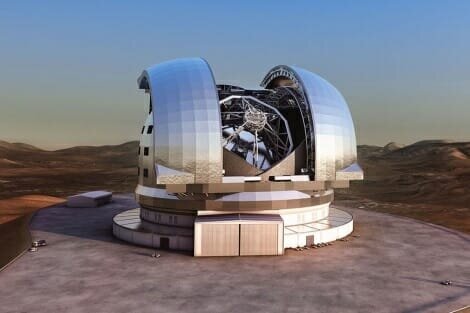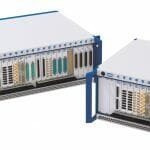Optical Surfaces Ltd has received an order to supply the University of Oxford, UK with 3 speciality glass prisms for a study that will enable defining key components in the state-of-the-art HARMONI spectrometer being developed for ESO’s Extremely Large Telescope (ELT).
The ELT, a flagship project of the European Southern Observatory (ESO), will be the largest ground-based optical telescope ever built. Located in Chile, with a primary mirror of 39m diameter, ESO’s ELT, together with its HARMONI spectrometer, is expected to make a huge impact in astronomical observations of exo-planets, Solar System objects, stars, nearby and distant galaxies, quasars and other exotic objects.
Being developed by the HARMONI consortium (jointly led by the Department of Physics at the University of Oxford (UK) and the UKATC), HARMONI is a visible and near-infrared (0.47 to 2.45 µm) integral field spectrograph, that will provide the ELT’s core spectroscopic capability, over a range of resolving powers from R~3000 to R~17000. HARMONI will offer a range of spatial pixel (spaxel) scales, to permit users to optimally configure the instrument for a wide range of science programs, from ultra-sensitive to diffraction limited, spatially resolved, physical, chemical and kinematic studies of astrophysical sources.
To achieve its potential, the optical design of the HARMONI spectrograph requires measurements of how refractive index changes with temperature (dn/dt) from room temperature (293K) right down to 70K. Getting data down to 70K is key because dn/dt is not a linear behaviour and varies from glass to glass.
Nicholas Cann – a Lead Optical System Engineer at RAL Space commented “HARMONI’s targets will be extremely faint, requiring the spectrograph optics to provide very high throughput and exquisite image quality at very fast focal ratios. This requires using new combinations of glasses, not previously used in cryogenic instruments.” He added ” The FPL55, LAL8 and BAH28 prisms to be produced by Optical Surfaces are key to us gaining accurate cryogenic refractive index measurements all the way down to 70K for these three glass types. This will increase the knowledge of these glass types and permit their use, both by HARMONI and by other future projects. The prisms will be delivered to NASA Goddard Space Flight Centre in Maryland, USA where they have a purpose made testing facility called CHARMS. The measurement of each prism / glass with a number of wavelengths sources would take a long time, gradually lowering temperature in a controlled way and taking measurement at key points; mapping the dn/dt curve and the glass’s optical dispersion properties”.
Dr Aris Kouris – Sales Director at Optical Surfaces Ltd. commented “It is a real pleasure to have been given this opportunity to assist University of Oxford in their study. To have been entrusted to provide professional advice on matters associated with realisable manufacturing tolerances for some of the final HARMONI spectrograph optical components shows the respect our technical team has within the international Astrophysics community. Some of the glasses included in the current study are known to present certain difficulties with polishing. Consequently, careful consideration is required at this stage of the optical design to define what is achievable and what reasonable manufacturing tolerances may be”.
The Department of Physics of the University of Oxford is one of the largest physics departments in the UK. It has a strong track record in astronomical instrumentation, working together with the Science and Technology Facilities Council (STFC) laboratories (UK Astronomy Technology Centre (UKATC) and the Rutherford Appleton Laboratory (RAL Space)) on a variety of high-profile projects in ground- and space-based astronomy. Oxford Physics works with leading organisations worldwide, such as the European Southern Observatory (ESO), the European Space Agency (ESA) and NASA, to answer fundamental questions about the origins and evolution of planets and galaxies. It does this by contributing to the design and build of state-of-the-art instruments for many of the world’s major telescopes.
Optical Surfaces Ltd. has been producing optical components and systems for leading astrophysics research groups for more than 50 years. The company’s ISO 9001-2008 approved manufacturing workshops and test facilities are deep underground in a series of tunnels excavated in solid chalk where temperature remains constant and vibration is practically non-existent. With such stable conditions testing, particularly with long path lengths, becomes quantifiable and reliable. Working with these natural advantages is a highly skilled team of craftsmen with a commitment to excellence in both product quality and customer service.
For further information on demanding, high precision optics for astrophysics please contact Optical Surfaces Ltd. on +44-208-668-6126 / [email protected].




